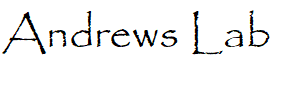One of our major goals is to use the fluorescence microscopy as a quantitative analytical tool. An enormous advantage of microscopy is that it enables fluorescence measurements to be made in living cells. To use fluorescence microscopy quantitatively we have developed new approaches, instruments and software. Using fluorescence proteins and novel non-toxic dyes we image the localization of proteins in cells and study trafficking between organelles. We also measure the effects of the extracellular environment and drug treatments quantitatively. Using fluorescence proteins as sensors we monitor cell stress responses and the turnover of short half-life proteins like MYC and MCl1. By combining quantitative imaging with new automated microscopes and robotics it has been possible to generate data sets containing millions of images. In order to analyse these images we have written new machine learning software for image analysis and cell classification. We are now extending these techniques to the quantification of cellular responses in 3D cultures of primary cells and organoids. Examining protein to protein interaction is one of the most challenging areas of cell biology. With industrial partners we developed new automated microscopes that provide both time and chromatic spectral data that we use to measure protein to protein interactions and to perform drug mechanism studies.

 Find David Andrews Lab Plasmids
Find David Andrews Lab Plasmids